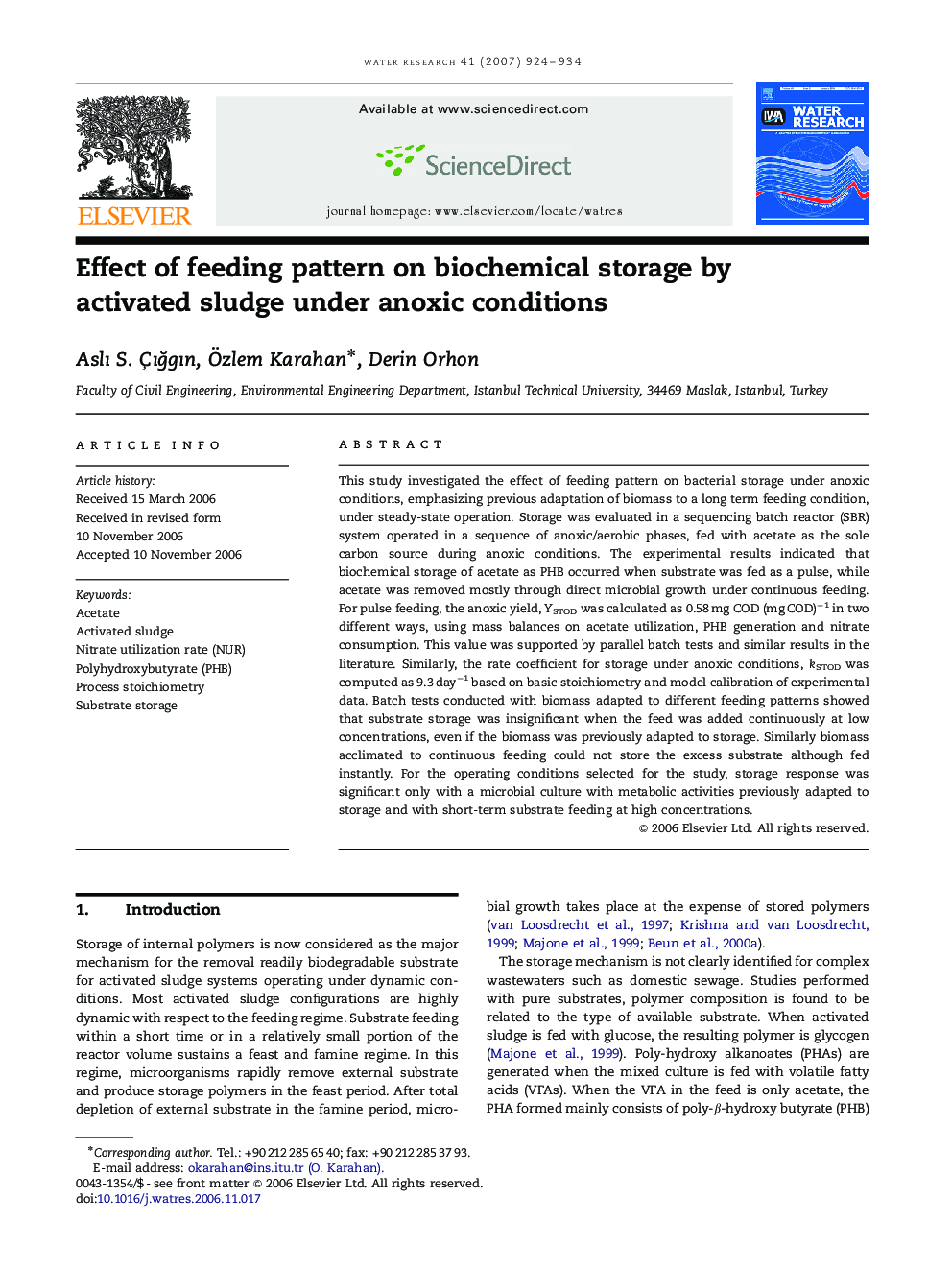| Article ID | Journal | Published Year | Pages | File Type |
|---|---|---|---|---|
| 4485552 | Water Research | 2007 | 11 Pages |
This study investigated the effect of feeding pattern on bacterial storage under anoxic conditions, emphasizing previous adaptation of biomass to a long term feeding condition, under steady-state operation. Storage was evaluated in a sequencing batch reactor (SBR) system operated in a sequence of anoxic/aerobic phases, fed with acetate as the sole carbon source during anoxic conditions. The experimental results indicated that biochemical storage of acetate as PHB occurred when substrate was fed as a pulse, while acetate was removed mostly through direct microbial growth under continuous feeding. For pulse feeding, the anoxic yield, YSTOD was calculated as 0.58 mg COD (mg COD)−1 in two different ways, using mass balances on acetate utilization, PHB generation and nitrate consumption. This value was supported by parallel batch tests and similar results in the literature. Similarly, the rate coefficient for storage under anoxic conditions, kSTOD was computed as 9.3 day−1 based on basic stoichiometry and model calibration of experimental data. Batch tests conducted with biomass adapted to different feeding patterns showed that substrate storage was insignificant when the feed was added continuously at low concentrations, even if the biomass was previously adapted to storage. Similarly biomass acclimated to continuous feeding could not store the excess substrate although fed instantly. For the operating conditions selected for the study, storage response was significant only with a microbial culture with metabolic activities previously adapted to storage and with short-term substrate feeding at high concentrations.
